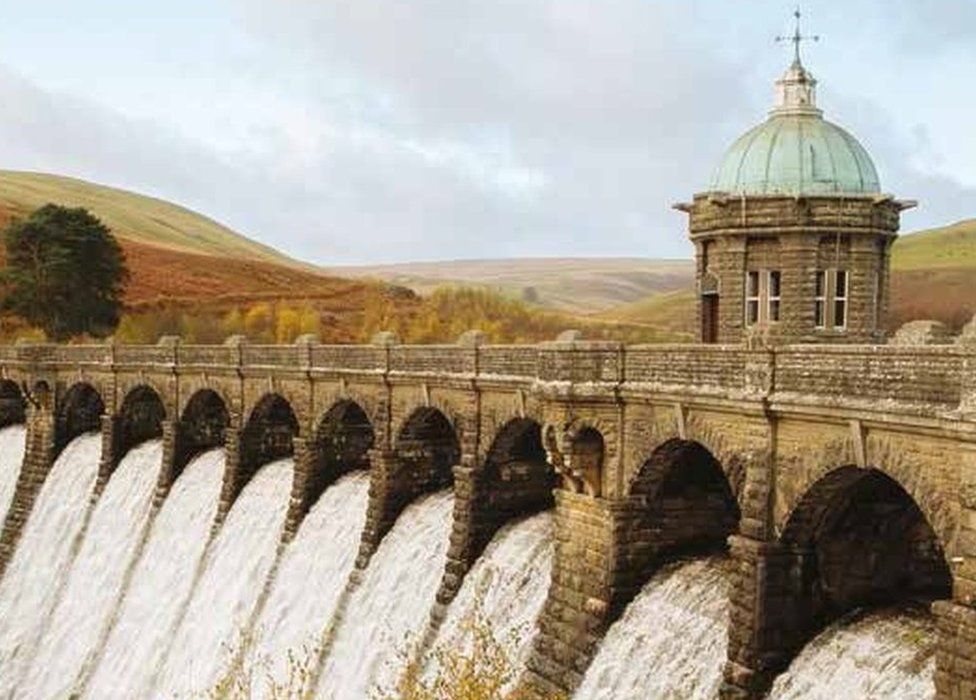Why Birmingham's water comes from Wales
- Published

Every day 320 million litres of water travels 73 miles (117 km) from Wales to Birmingham to fill kettles, baths and boilers. But why does it come so far?
It dates back to the Victorian era when Birmingham was a rapidly growing city plagued by illnesses like cholera and typhoid which were caused by contaminated water.
A search for clean water sparked an "amazing feat of ingenuity" to bring it from the Welsh hills to the city.
And a century on repair work is preserving the supply for the next 100 years.
During the industrial revolution Birmingham's population soared and the city's wells and rivers, the Rea and Tame, become contaminated by sewage.
In 1873 Joseph Chamberlain became mayor which went on to cause a hostile takeover of the city's waterworks, creating the Birmingham Corporation Water Department.
His surveyors went out in search of clean water and decided the best place to get it from was Elan Valley in Wales.
It had an average annual rainfall of 1830mm and its landscape was higher than Birmingham's, which would enable the 55 million litres of water to be transported to the city entirely by gravity.
Sarah-Jayne O'Kane, from Severn Trent Water, said the ambitious plan was to create a series of lakes by damming Elan and Claerwen rivers and transporting water via an aqueduct.
'No say'
The Birmingham Corporation Water Department achieved an Act of Parliament in 1892 enabling the compulsory purchase of the Elan Valley.
"The people of the village had no say," said Glyn Webster at Elan Valley Visitors Centre.
"About 100 people had to move out and around 20 buildings were destroyed.
"Most of the villagers were tenant farmers and only the land owners were given a small amount of compensation."
The aqueduct was made of channels and pipelines either tunnelled through the hillside or dug in shallow excavations called "cut & cover", Mrs O'Kane said.
Work began in 1893 and after nearly 12 years, a new village, railway line and the involvement of 5,000 construction workers at its peak, the new water supply was opened by King Edward VII and Queen Alexandra 21 July 1904.
"The aqueduct is now 112 years old and needs repairs," Mrs O'Kane said.
Severn Trent Water will complete the £325m Birmingham Resilience Project by 2020 which will see water from the River Severn at Lickhill pumped into the city.
This will be used in emergencies and when the Elan Valley Aqueduct is drained for repairs.
Mrs O'Kane said: "100 years ago the aqueduct was a huge undertaking and it was incredibly innovative.
"It took nearly 12 years and £8m to complete back in 1904 - to do the same job today would cost £3bn."
She added: "It's almost unthinkable today. That's why we need to work hard to protect this legacy the Victorians left for us and to keep it running for at least the next 100 years."
Paul James got in touch through Your Questions.
He asked: "Could you tell me about Birmingham's water supply - why does it come from Wales, what is the story of the pipe line construction and how much did it cost?"
- Published30 October 2015